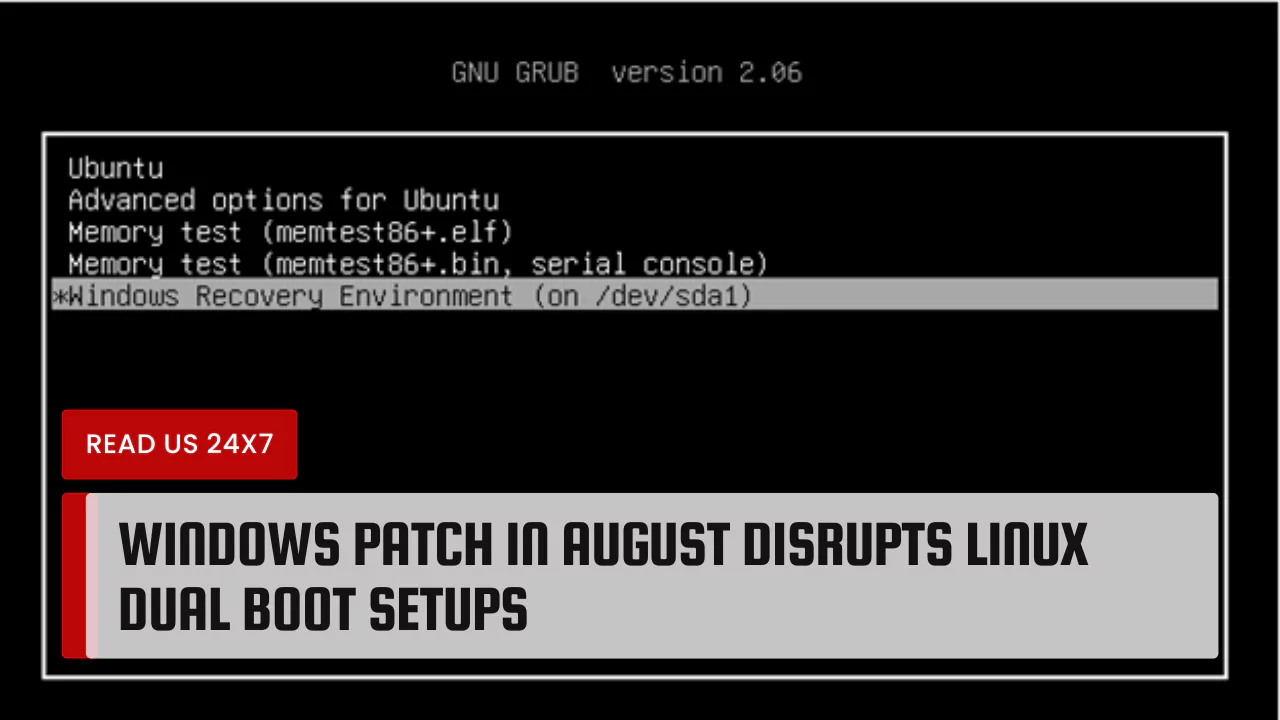The August 2024 Windows update caused significant disruptions for users who dual boot between Windows and Linux. Many experienced boot failures on their Linux systems after installing the update, primarily affecting those with Secure Boot enabled. This issue arose due to a new security feature implemented by Microsoft, which unintentionally blocked several Linux distributions, including popular ones like Ubuntu and Linux Mint.
What Happened?
When Windows released its August updates, it included a change to Secure Boot. Secure Boot is a feature that helps keep systems safe. The update added a new security measure called SBAT, which helps block certain Linux boot loaders. These boot loaders did not have patches for a known security risk, CVE-2022-2601, found in Linux GRUB2. This change aimed to protect Windows users from potential threats. However, it inadvertently impacted users with dual boot setups.
The Problems Users Faced
After installing the August updates, many users reported that their systems would not boot. They received error messages like “Verifying shim SBAT data failed: Security Policy Violation.” Some devices would shut down completely. This situation left many people unable to access their operating systems.
Reports showed that older Linux distributions might fail to boot after the Windows update. Users noticed that they faced difficulty running some popular Linux systems. Forums lit up with complaints from those unable to start their computers.
Microsoft’s Explanation
Microsoft stated that the new SBAT update should not affect dual-boot systems. They mentioned that the SBAT value is not intended to block these systems. However, users continued to face problems after the update. This confusion led to frustration among many who relied on dual boot setups for their work and personal use.
Microsoft advised users to contact their Linux vendors for solutions. They emphasized that users should obtain updated versions of their Linux distributions. Despite this, many found it challenging to resolve the issue.
Affected Linux Distributions
Users across many different distributions experienced issues. Popular systems like Ubuntu, Linux Mint, Zorin OS, and Puppy Linux reported boot failures. While not every version of these systems was affected, many users had difficulties with newer or updated versions. The lack of a definitive list made it hard for users to know if they were affected.
Solutions to the Problem
For users facing booting issues, there are a few potential solutions. One common fix is to disable Secure Boot in the BIOS settings. Disabling this feature should allow the system to boot normally. After gaining access, users can then reinstall their preferred Linux version. Most users can restore their systems by updating to the latest Linux distribution while Secure Boot remains off.
Once users have reinstalled their Linux systems, they can choose to enable Secure Boot again. Many found this to be the only workable solution after the August Windows update. It is essential to ensure compatibility with Secure Boot to avoid future issues.
Community Feedback and Reactions
The community expressed strong feelings about this update and its impact. Many users felt funneled into a corner, having to address compatibility after relying on dual boot systems for years. Comments on forums echoed a mix of frustration and bewilderment. Users expected smoother integration between Windows and Linux but found themselves troubleshooting after what was intended to be a simple update.
In discussions about Secure Boot, many users highlighted concerns. They noted that the feature appeared to break more than it fixed. Others expressed their wish for clearer communication from Microsoft about what the updates entail.
Recommendations for Dual Boot Users
For anyone using a dual boot system, staying aware of updates is crucial. Users should frequently check for updates from both Windows and their chosen Linux distributions. Understanding the specific versions they run can assist in identifying potential compatibility issues.
Backup data before updates is also essential. If problems arise, users can restore their systems without significant loss. Keeping a rescue disk or using recovery options can provide another layer of safety.
Conclusion
The August 2024 Windows update caused widespread disturbances for users who dual boot Windows and Linux. Secure Boot changes blocked several Linux distributions from loading. Users faced frustrating issues while seeking solutions. By disabling Secure Boot, users can access their systems. This incident highlights the importance of compatibility checks when updating operating systems. As many users navigate the challenges presented by new updates, continued awareness will prove essential in the future.



